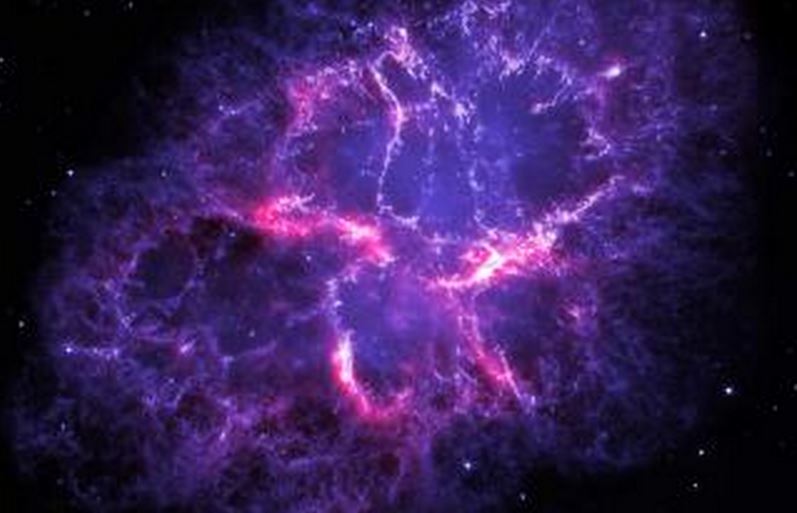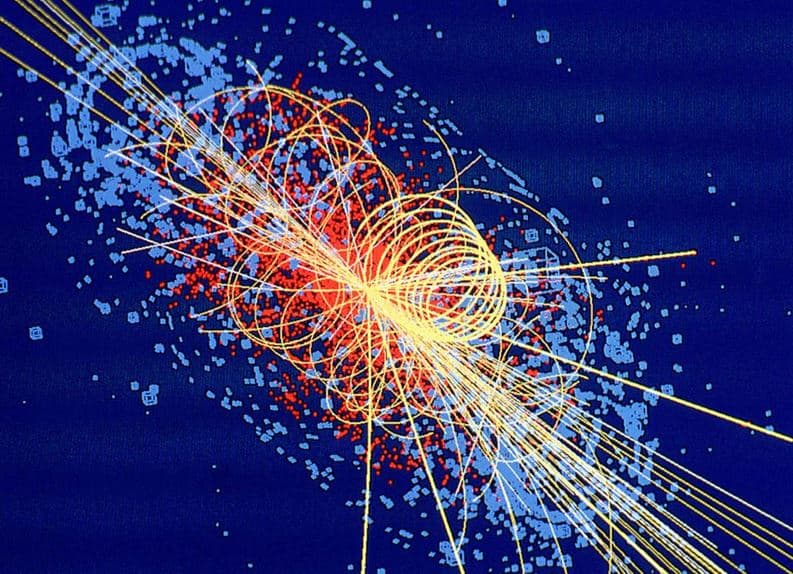The Large Hadron Collider, the most powerful particle accelerator ever built, is now 65% more powerful than it was two years ago, and will be up and running again at the end of March. It will not be on full throttle, however, until the end of May.
A particle accelerator is a machine for speeding up subatomic particles to high velocities by means of electric or electromagnetic fields. The accelerated particles collide with other particles, either as a research technique or to generate high-energy X-rays and gamma rays.
The LHC (Large Hardon Collider) is the world’s largest machine, and probably the most complicated one too. It has deepened our understanding of matter as well as the Universe.

If, as scientists believe, the Big Bang created equal amounts of matter and antimatter. Why is there far more matter in the Universe today? CERN’s engineers hope the LHC can help find out. (Image: CERN)
Since being launched in 2008, CERN (European Organization for Nuclear Research) scientists in Geneva, Switzerland, have been using the LHC, a 27km (16.77m) machine, to smash protons together at nearly light speed. Immediately after the collision, the particles break up into the smallest building blocks, like Bosons and Hadrons.
One of these, the Higgs-Boson, a particle that was only known about theoretically, was physically proven to exist just before the LHC was shut down in 2013.
Other Higgs bosons, Dark Matter and Gravity
Researchers hope the LHC will help them determine whether there is just one Higgs boson or a whole family of them. According to the Supersymmetry Theory, there are five types of Higgs bosons. Finding those would be a major scientific milestone.
Scientists also want to know exactly what Dark Matter is – this invisible thing we know exists, but cannot detect, which appears to lurk around galaxies and makes up more than 65% of the Universe.
The LHC may help us find out why everything around is made of matter, rather than antimatter, which was supposedly created in equal supply when the Universe started.
It may also provide clues on why gravity is so much weaker than other forces. Perhaps it spreads through extra dimensions, which could be why we only feel a fraction of its strength.

In this simulation, protons collide at 14 TeV, producing four muons (unstable subatomic particles). Lines denote other particles, and energy deposited is shown in blue (Image: CERN)
A lot of work was done during the shutdown
In 2013, after some amazing achievements, the LHC was shut down for planned maintenance and an upgrade. Hundreds of technicians and engineers spent about two years consolidating and strengthening the accelerator.
At the end of this month, LHC will have a collision energy of 13 TeV (Terraelectron-Volts), compared to its record energy generation of 8 TeV. Scientists had initially considered raising the power capacity to 14 TeV, but opted for thirteen for operational reasons.
In the video at the end of this article, CERN scientists, managers and operational staff describe the colossal engineering effort.
CERN Technology department’s Jean-Philippe Tock led the Superconducting Magnets and Circuits Consolidation project during the 2013 shutdown. His team concentrated on consolidating more than 10,000 high-current splices in 1,695 interconnections between the LHC’s magnets.
Engineers Mirko Pojer and Anna Chrul describe the work in the tunnel: the safety release valves for dispersing helium safely from magnets; and the process of mounting a shunt to each splice within the interconnection to provide an alternate pathway so that the 11,000-amp current can pass safely from magnet-to-magnet in the event of a fault.
Frédérick Bordry, CERN Director for accelerators and technology, talks about the implications of running the accelerator at 13 TeV collision energy, and highlights some of the machine’s requirements to reach this new energy frontier – such as a high-quality vacuum and radiation-resistant electronics.
Activities coordinator for Long Shutdown 1 (LS1), Katy Foraz, discusses the logistical challenges involved in coordinating the maintenance work. During the two-year shutdown period, the elevator in the LHC tunnel went up and down more than 400,000 times.
“Now teams are working hard for the upcoming restart. The first circulating beams of protons in the LHC are planned for the week beginning 23 March, and first 13 TeV collisions are expected in late May to early June.”
